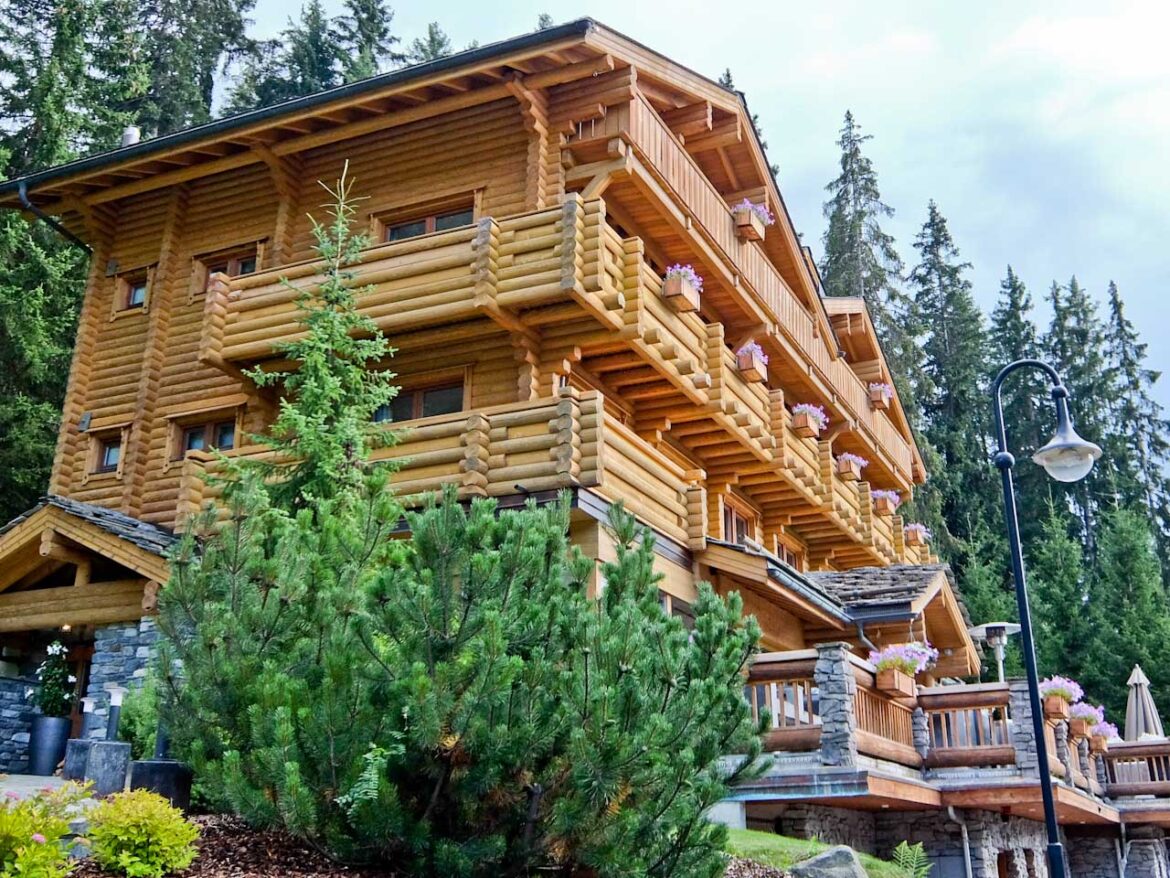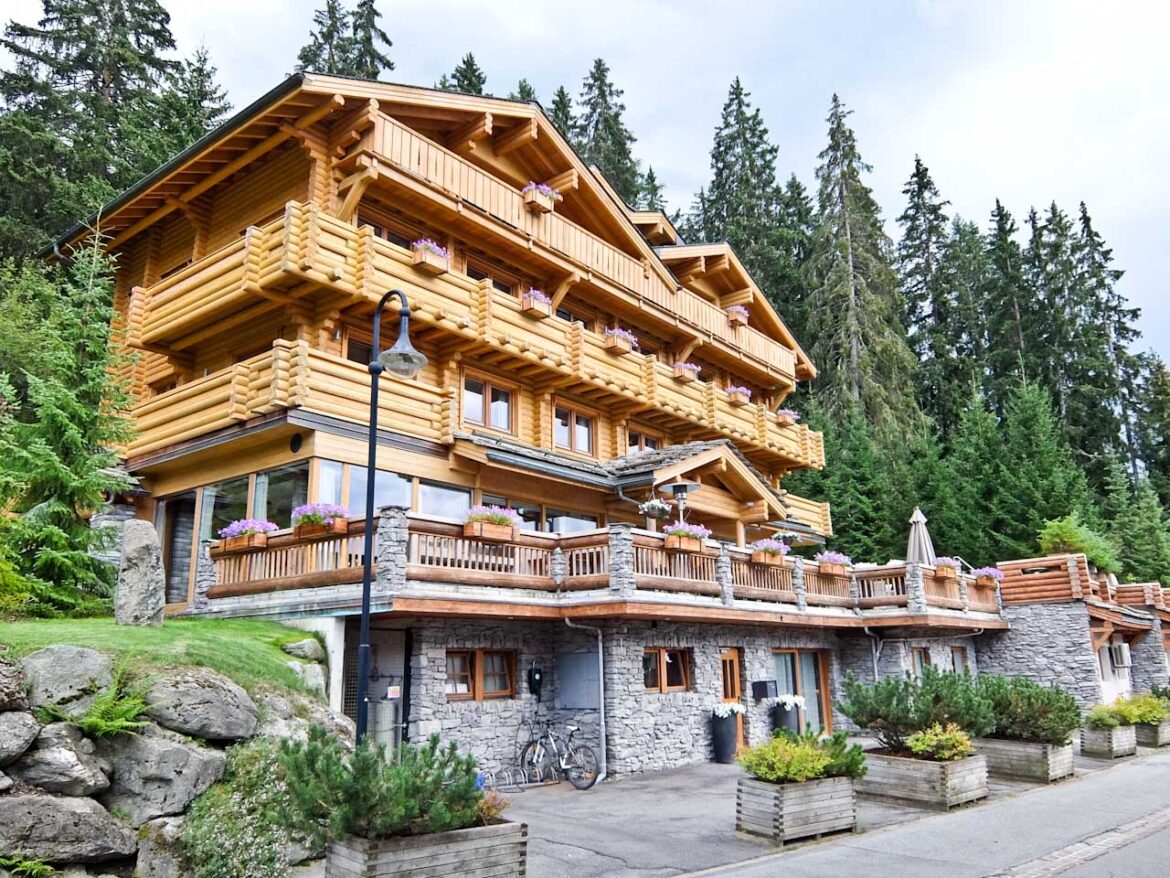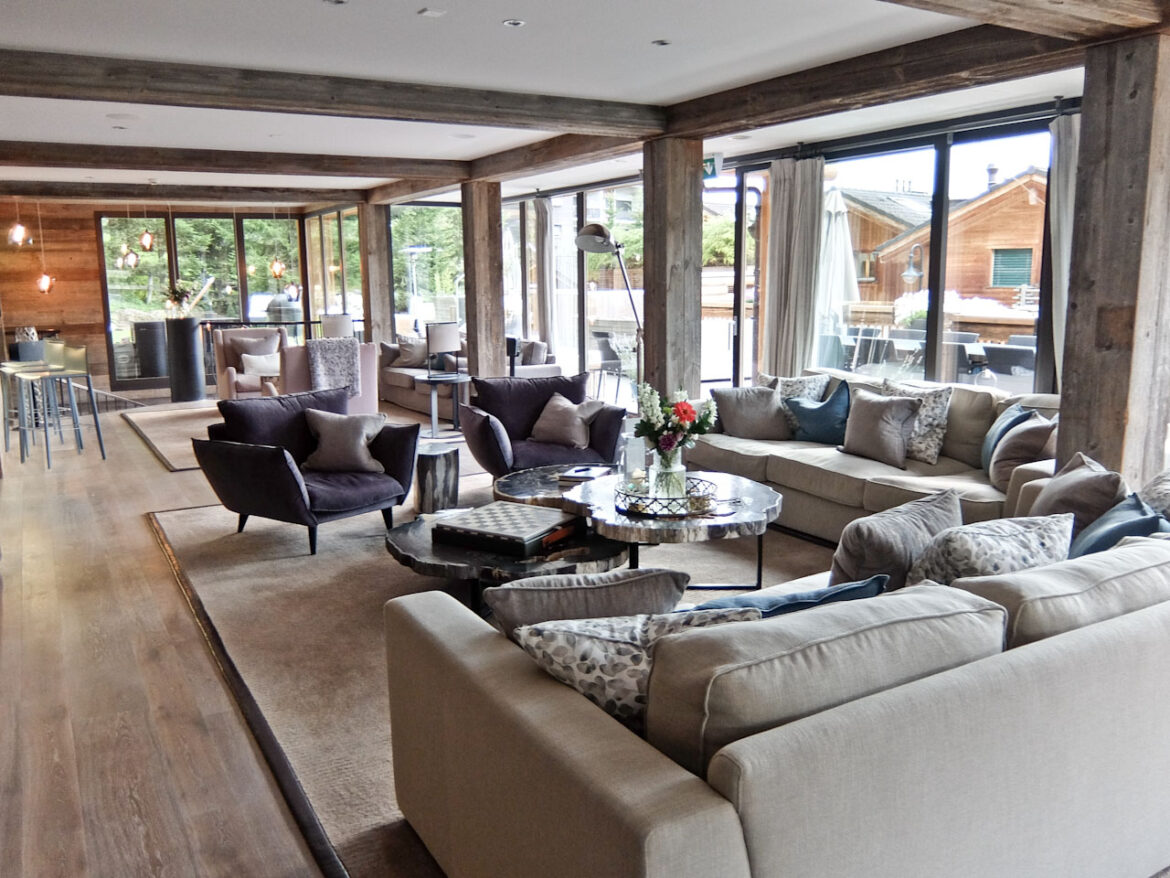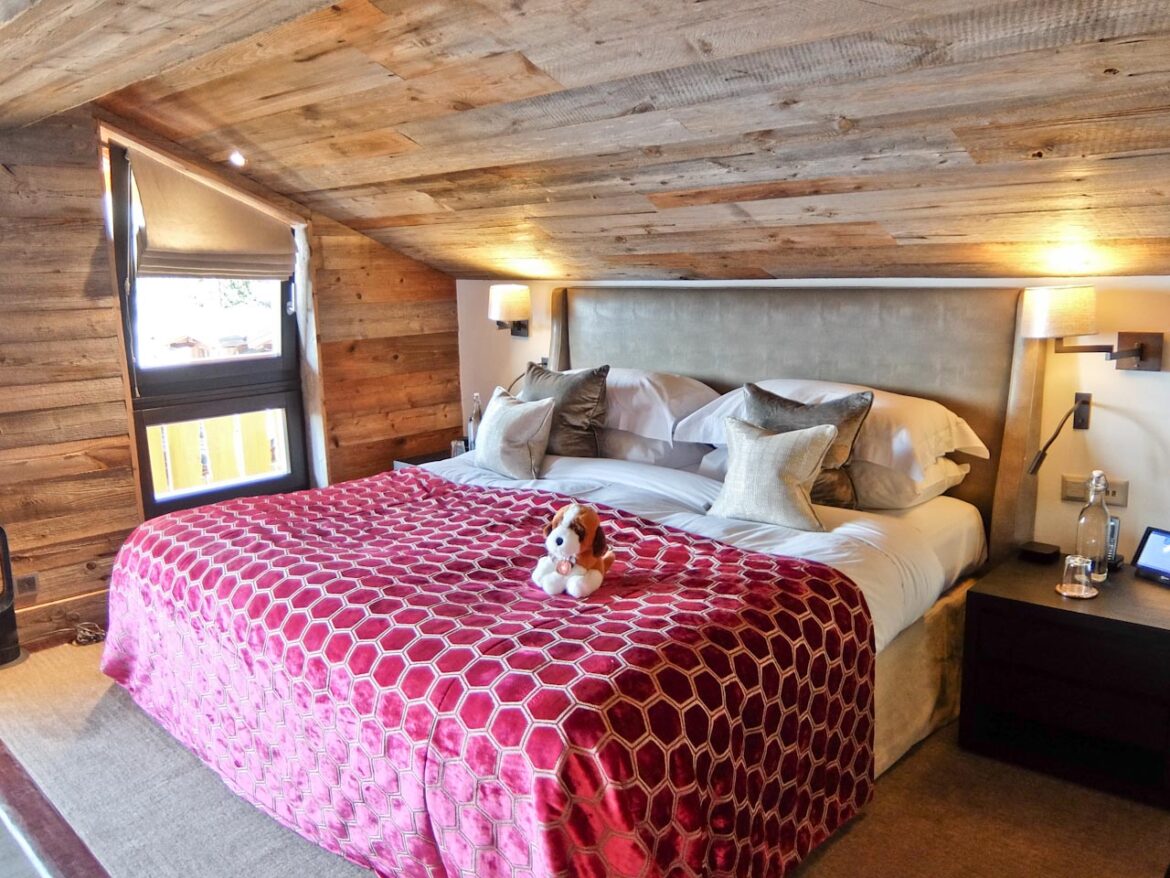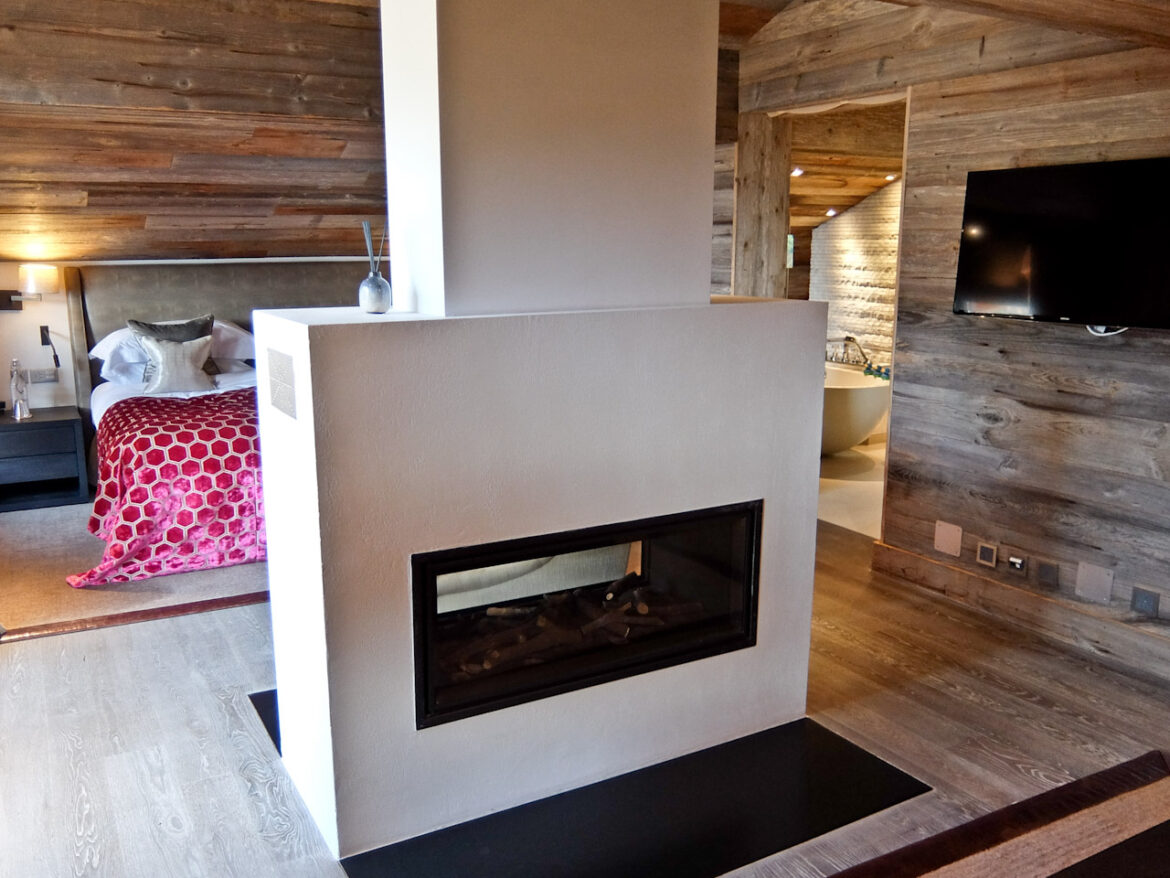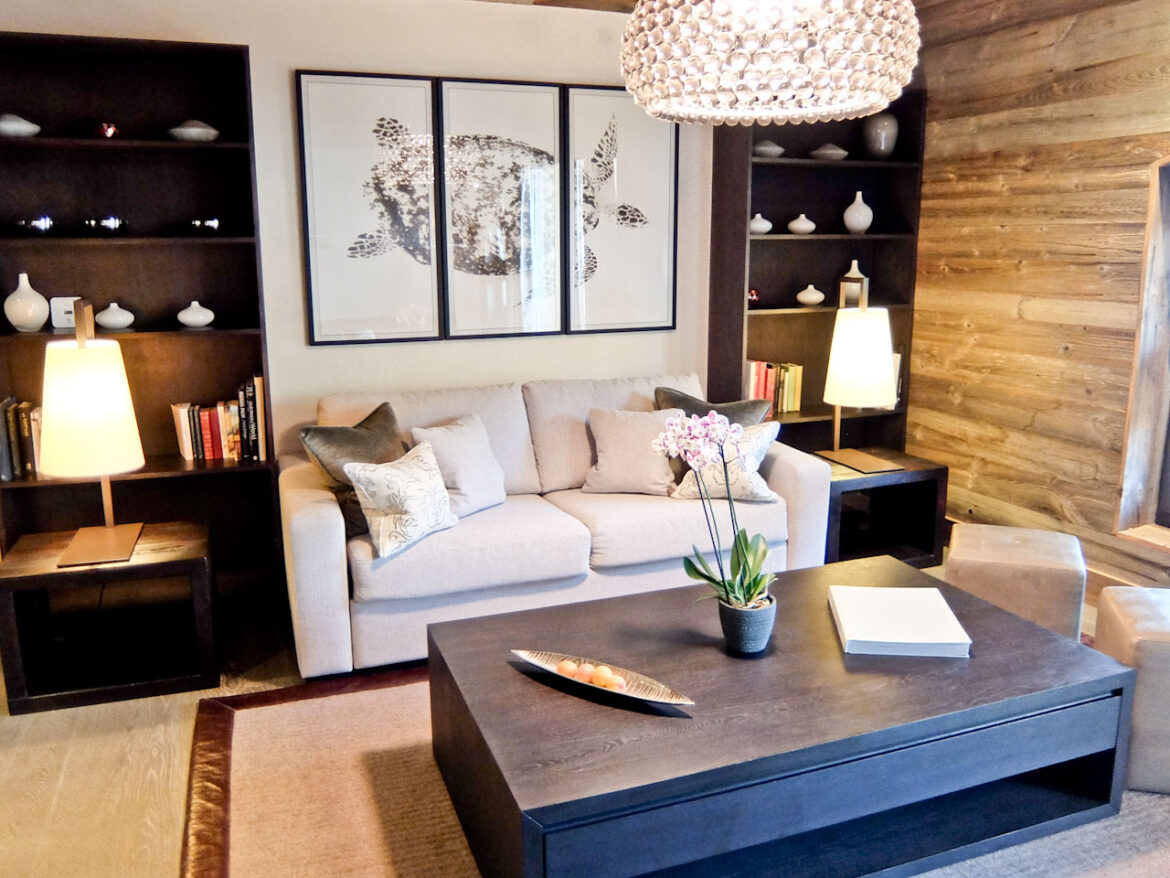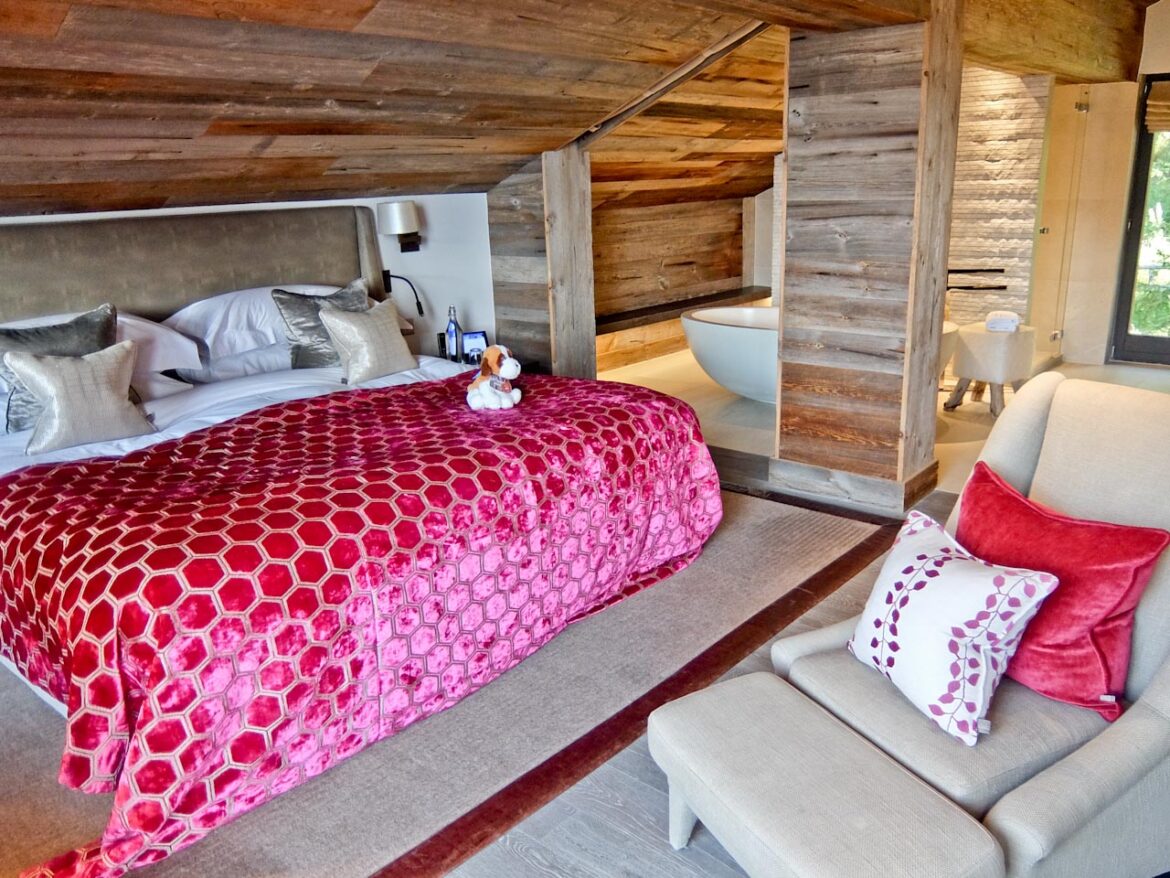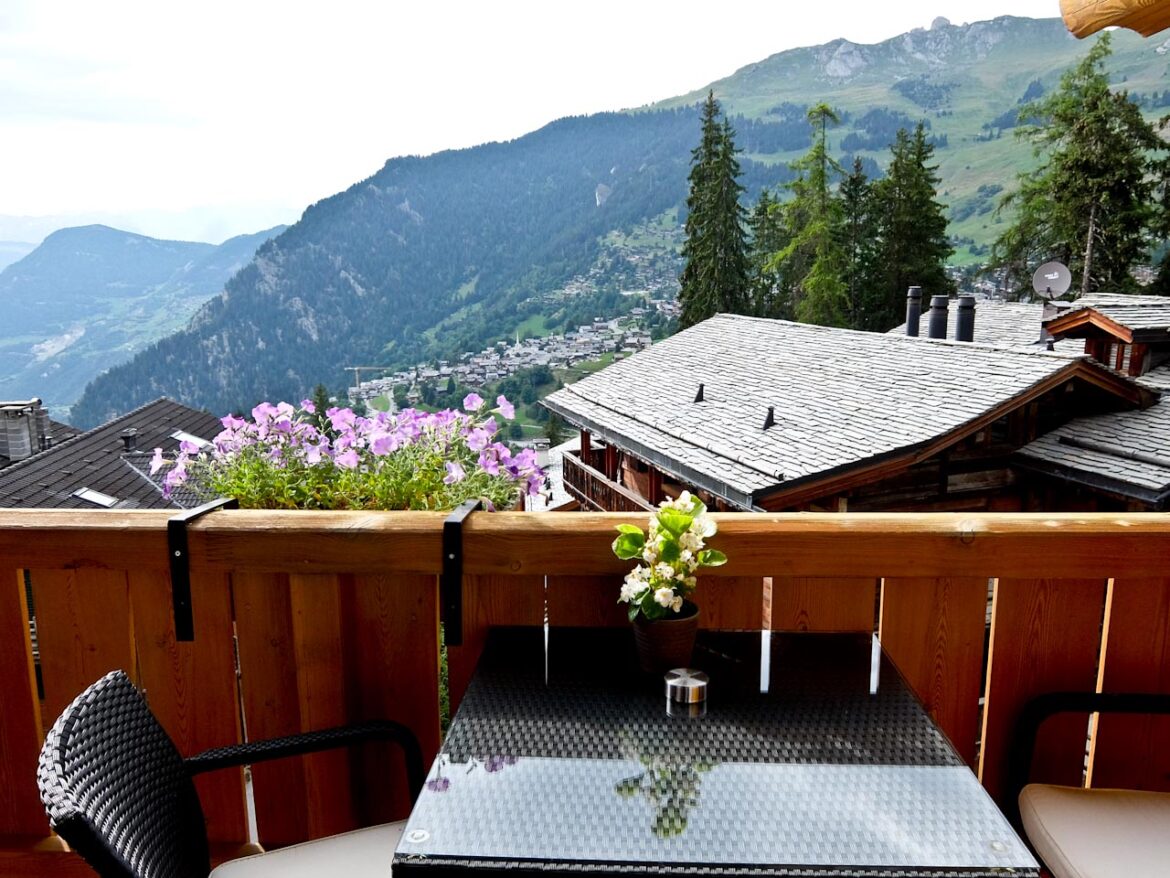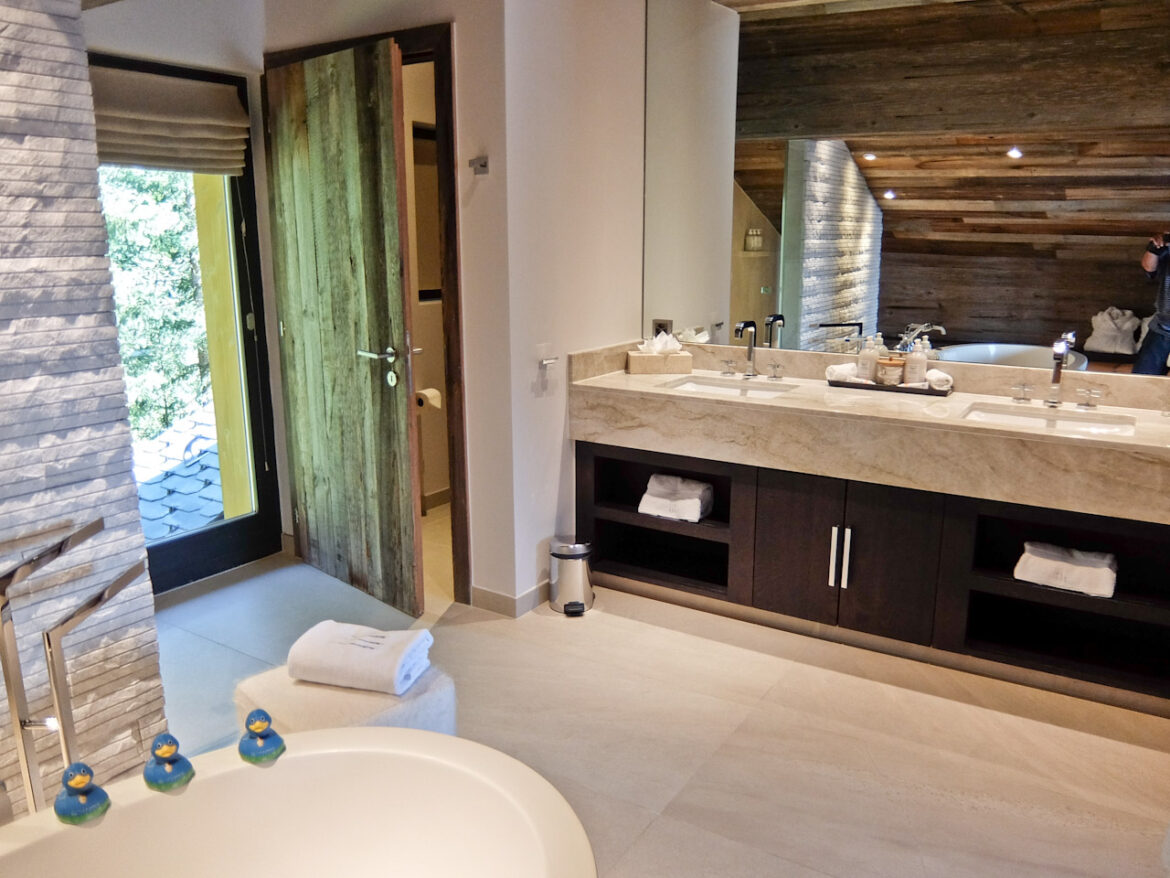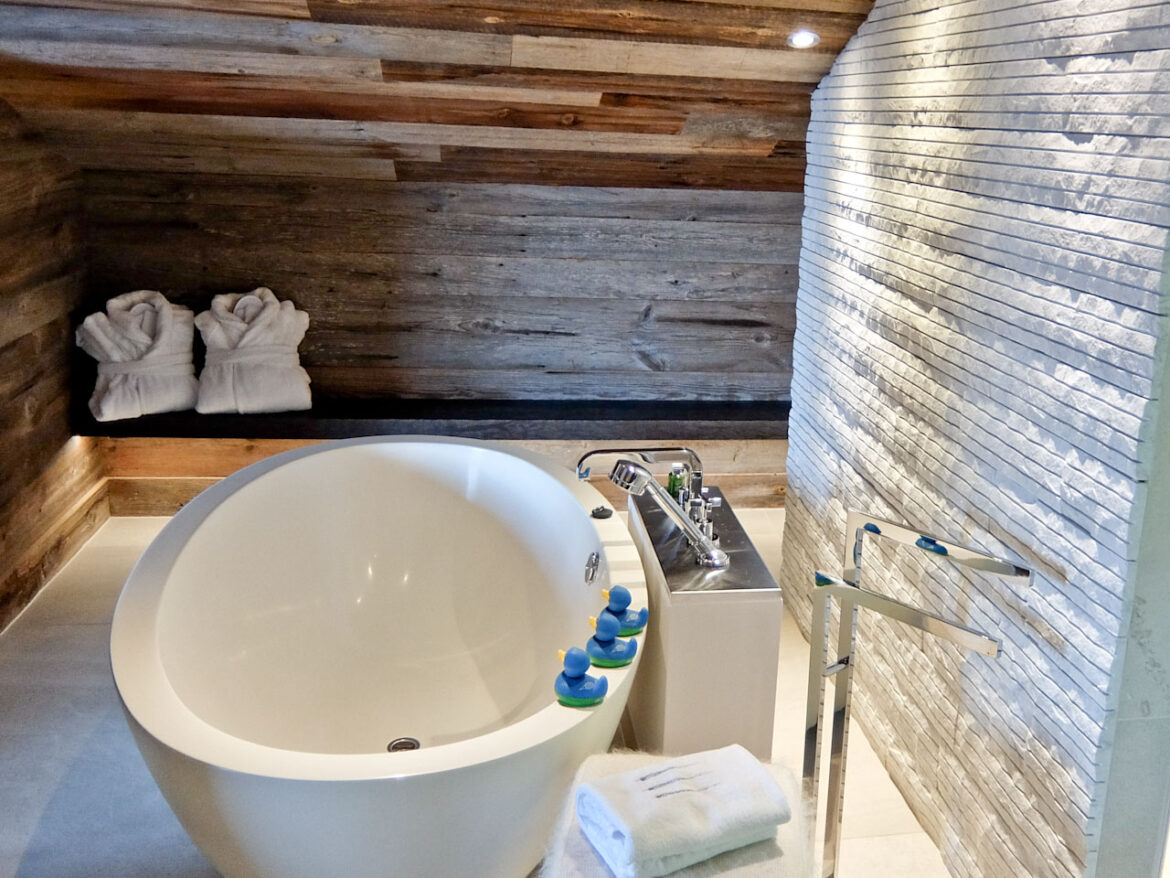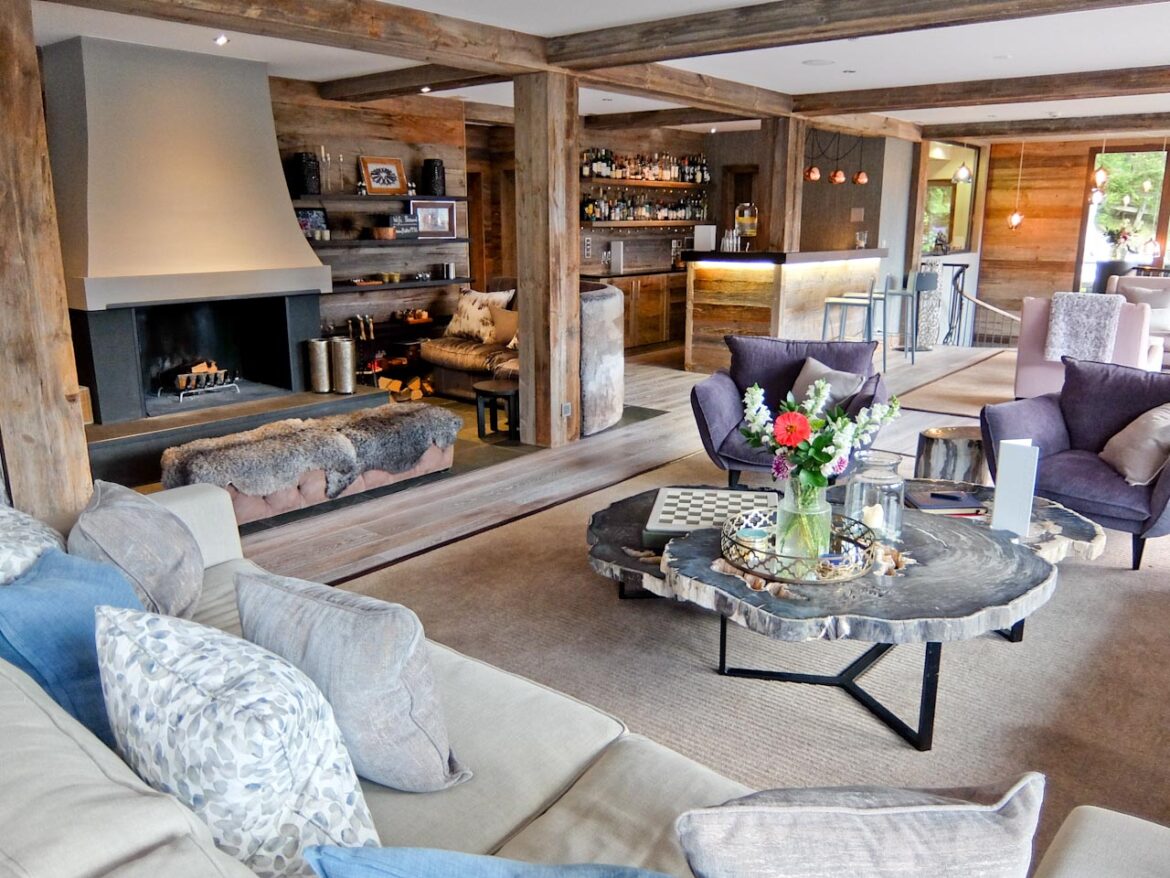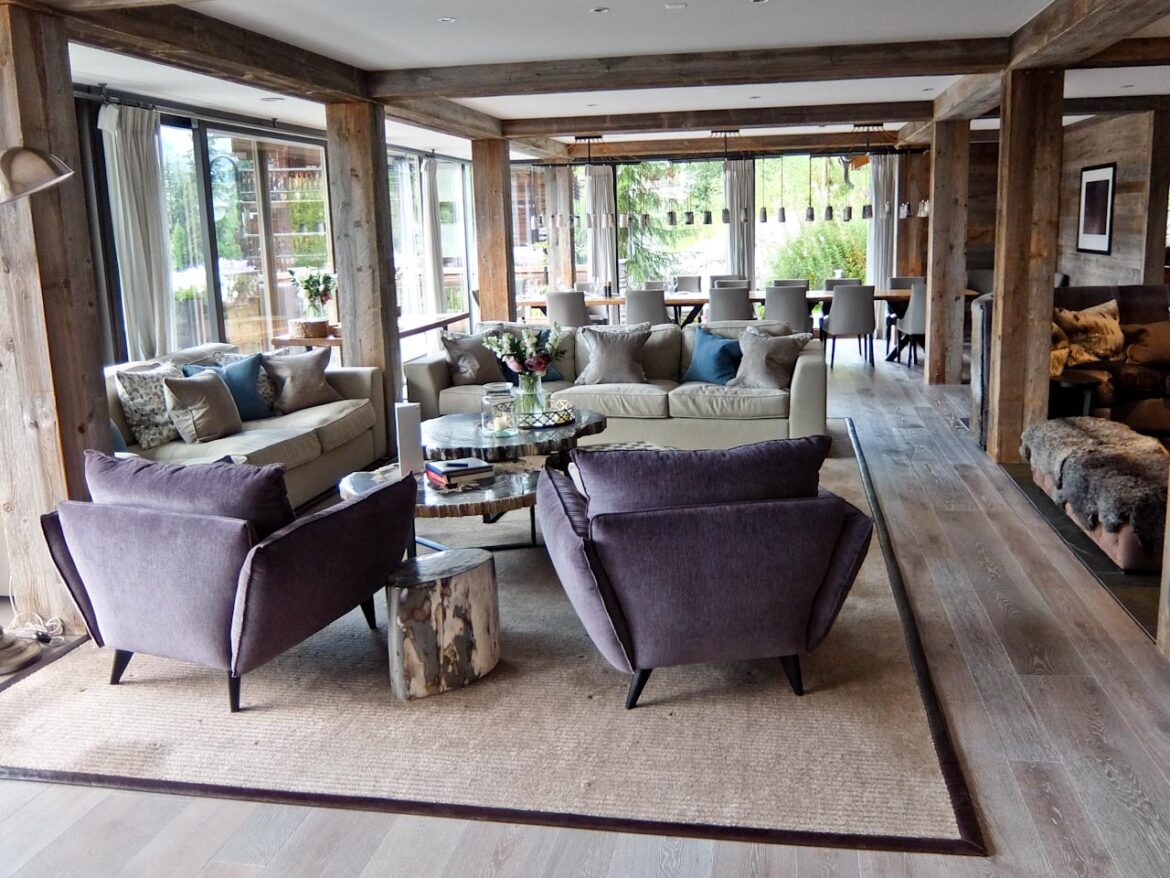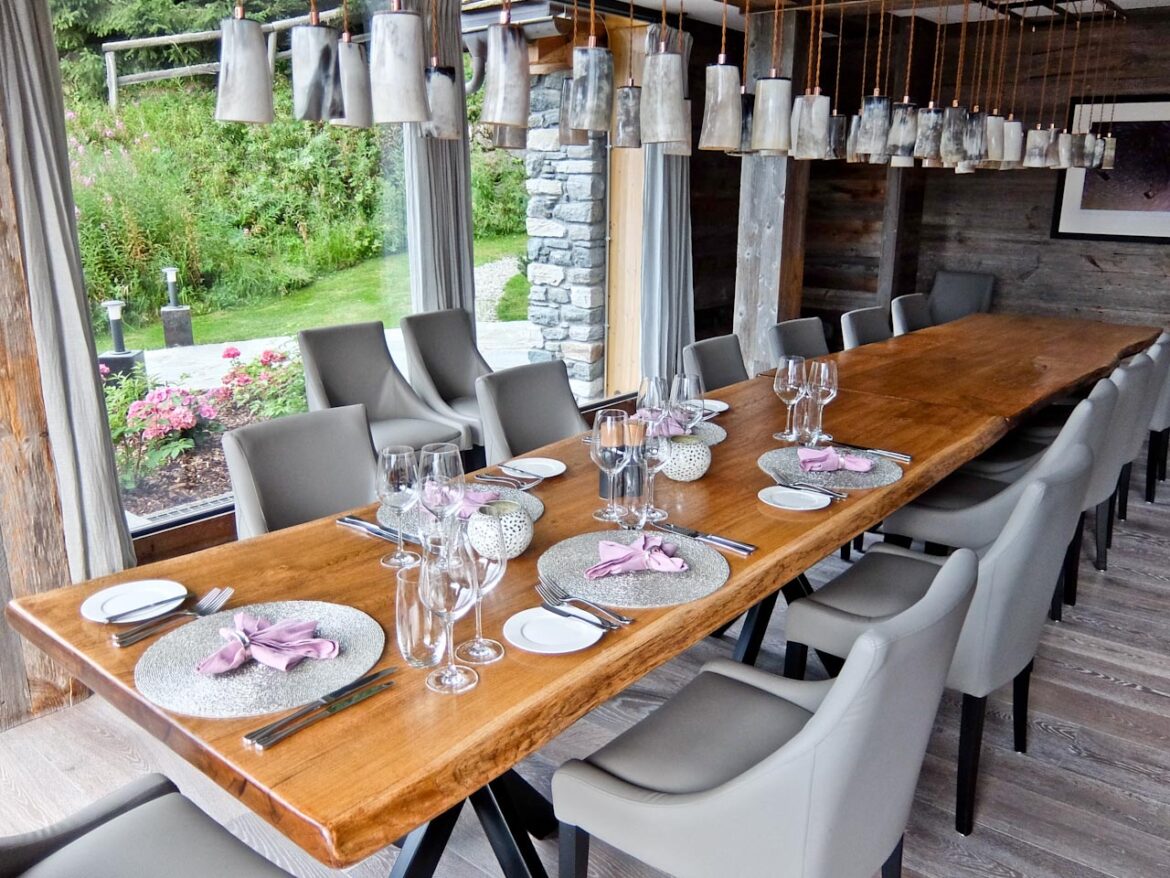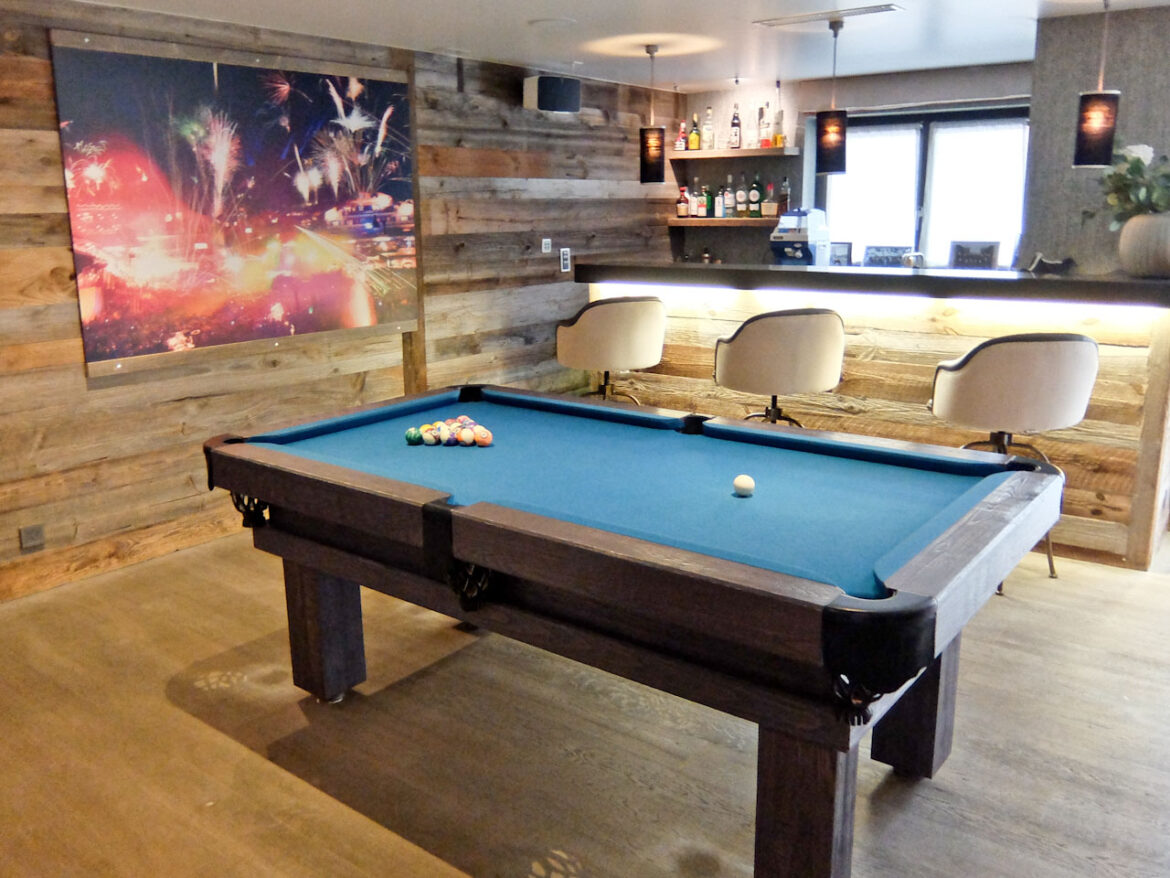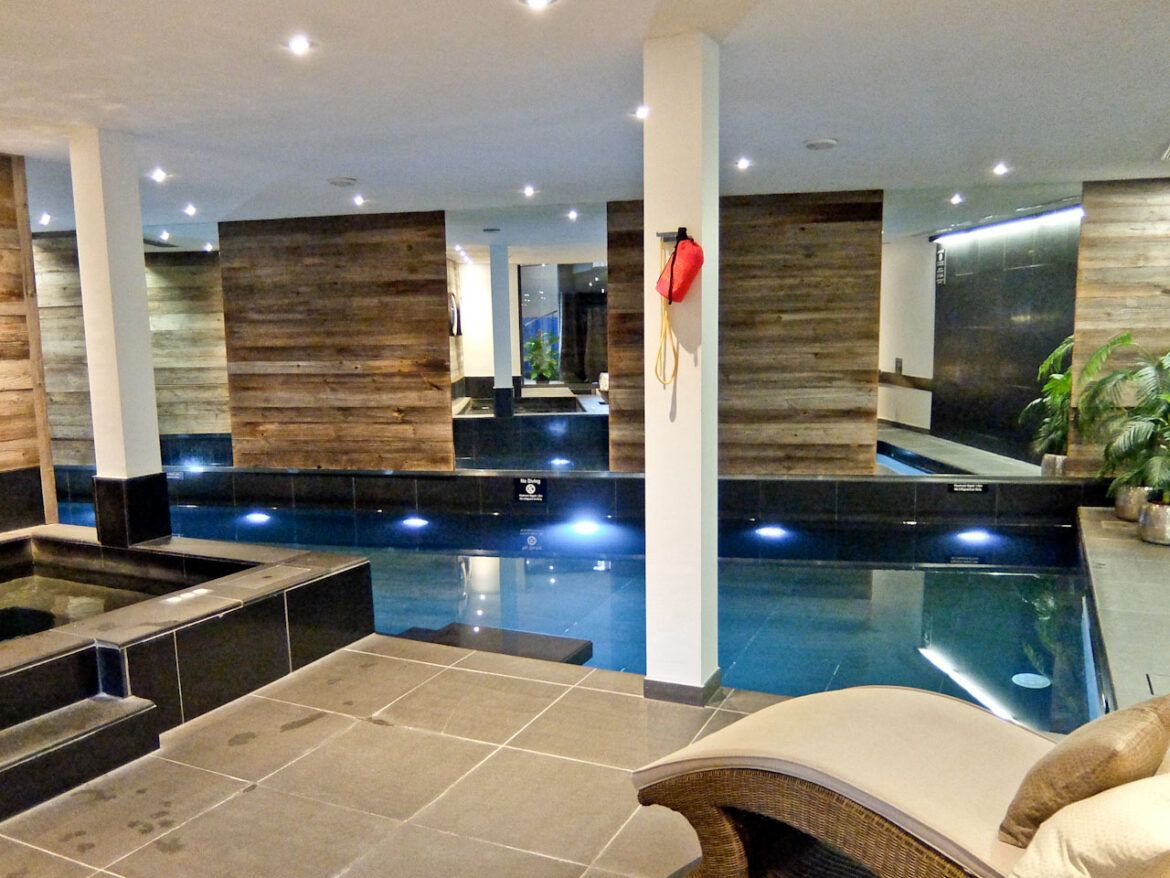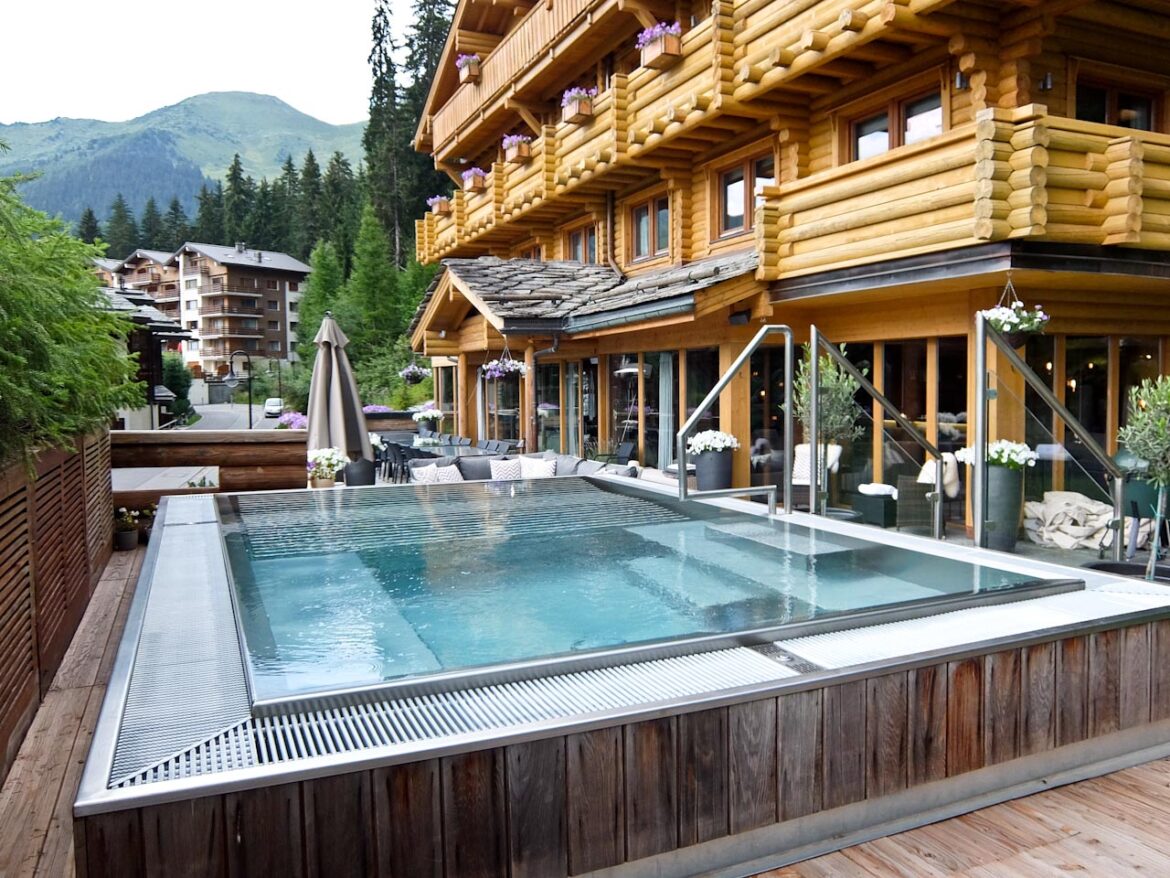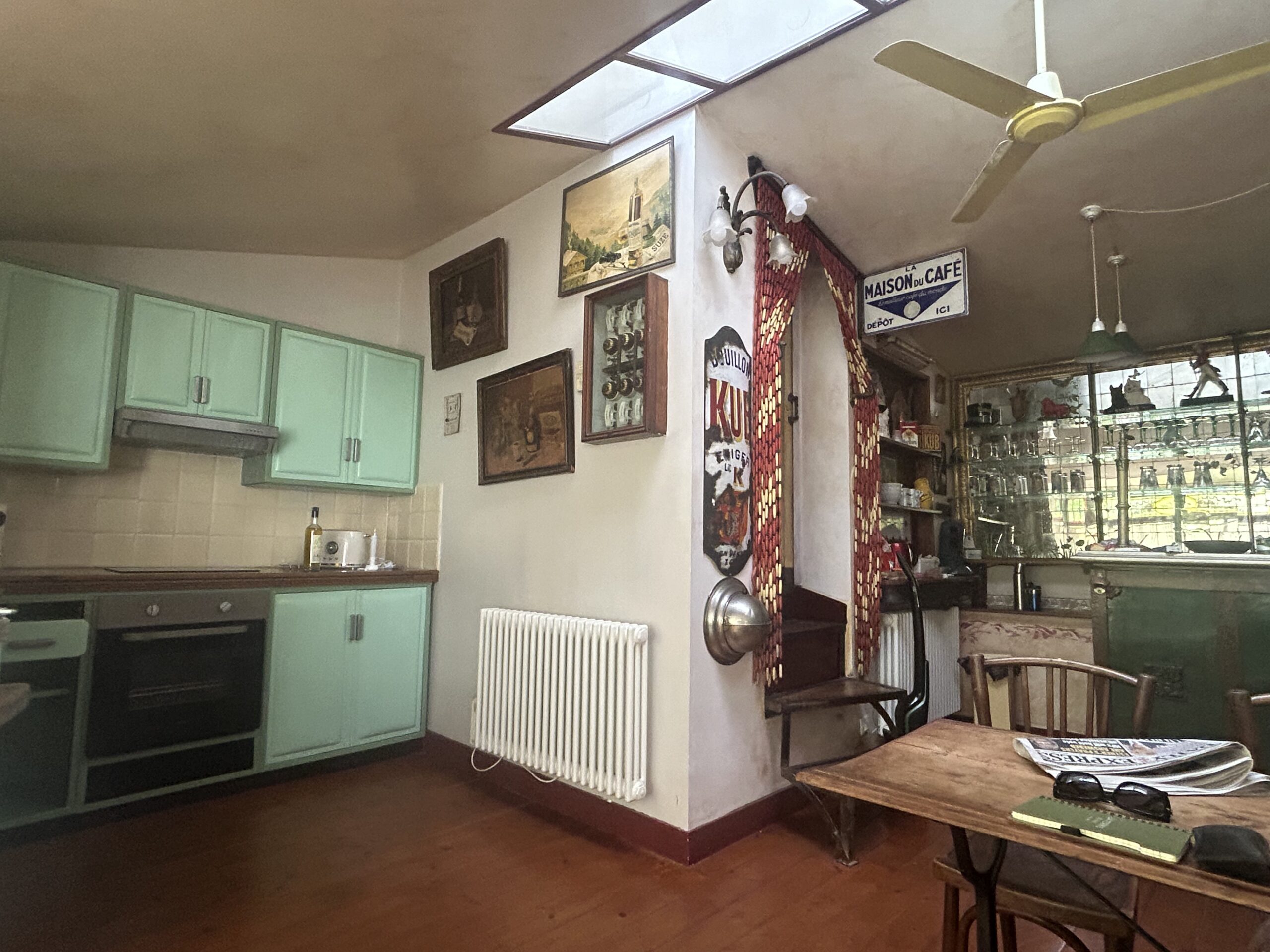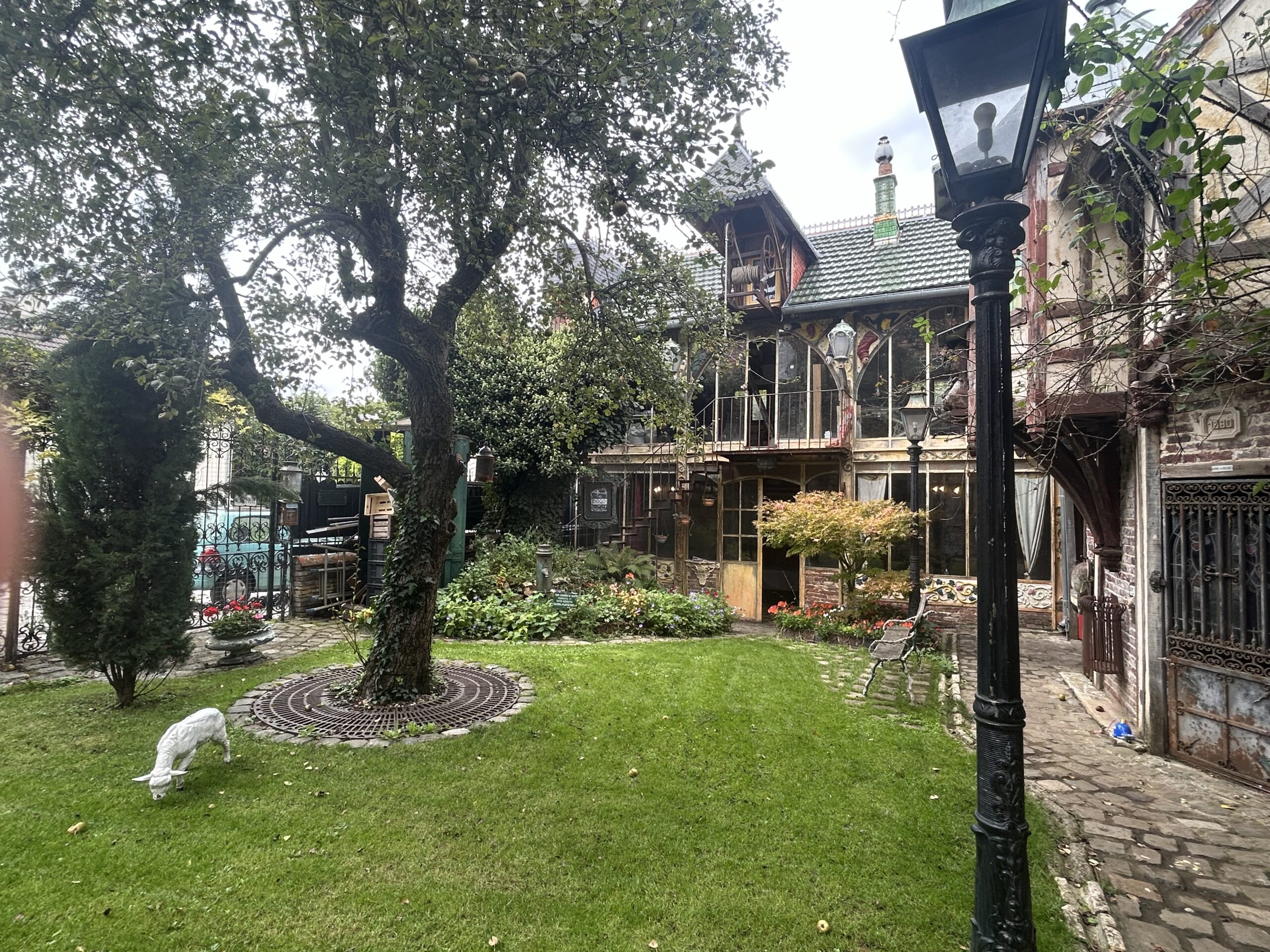The Lodge Hotel review, Verbier, Switzerland
The Lodge, Verbier is located at an altitude of around 1,500m in the Valais region of south-western Switzerland – 51 miles east of Geneva as the crow flies. It’s just a five-minute walk from the centre of Verbier, and only 250m from the main Medran lift station.
With its stunning views, first-class amenities, and world-class service, this mountain hideaway, The Lodge in Verbier, part of Sir Richard Branson’s Virgin Limited Edition portfolio, more than lives up to its billing. You’ll get a warm welcome here, as service is key and it feels more like a private home than a hotel.
Each room is different and the chic alpine décor blends contemporary luxury with traditional Swiss charm. Wooden beams, plush furnishings, and roaring fireplaces add to the mountain ambience. Huge windows and balconies offer sweeping views of the snow-capped peaks and verdant valleys.
One of the standout features of The Lodge is its commitment to gourmet cuisine. Food and drink is all inclusive, with meals crafted by the chalet’s in-house chef. The menu focuses on fresh, local ingredients, with a strong emphasis on hearty Swiss dishes infused with modern flavours.
Who for
Singles, couples and families who want a luxury base in the heart of the Swiss Alps, in winter or summer. The Lodge is also ideal for wedding receptions and special reunions.
Accommodation
The Lodge offers a boutique experience, with just nine rooms, including two grand master suites and seven bespoke double bedrooms. An extra 6 children can take over the kids’ bunkroom, making it perfect for holidaying with friends and family.
In winter the chalet has to be booked in its entirety, accommodating up to 18 guests, ideal for larger groups or families. In the summer, and during certain weeks in the winter, you can book individual rooms.
We stayed on the top floor in one of the two master suites. It featured a centrepiece fireplace, underfloor heating, traditional wooden beams and private balcony with wonderful mountain views. It was connected to the other suite by a secret doorway hidden behind a bookcase.
The Super king-sized bed was complemented by comfy upholstered sofa and chairs and there was a fully stocked mini-bar. A Nespresso coffee machine and kettle are standard and the evening turn-down service delivered surprises every night. I liked the giant Toblerone.
The large luxurious en-suite bathroom had a separate shower and bathtub and robes and slippers are standard. Add double washbasins plus your own rubber ducks for the bath.
Food and Drink
Foodies are in for a treat at The Lodge, as all meals and snacks are included. Start the day with a hearty breakfast of delicious pastries, fruits, cereals, homemade jams and cooked dishes before heading out for a day in the mountains.
A light lunch is served which can be taken outside on the terrace during the summer. In the afternoon, guests are welcome to help themselves to a slice (or two) of homemade cake and cookies and hot and cold drinks. Alcoholic drinks are freely available at any time and in the early evening everybody gathers for cocktails and tantalising gourmet snacks.
The open-plan kitchen allows you to watch the culinary team as they prepare your dinner. It’s served at a large communal dining table where you get to know your fellow guests. This feature works surprisingly well but you can also choose to dine in your room if you need privacy.
The set three-course menu includes local and international specialities and includes selections from the impressive wine cellar, including fine wines from Switzerland, France, and beyond. Don’t miss out on the additional cheese course as Verbier is famous for its Raclette and other alpine cheeses.
Facilities
The Lodge boasts an impressive range of amenities, designed to pamper guests after a long day on the mountains. The cosy living areas, with oversized sofas and floor-to-ceiling windows, are perfect for relaxation. In the basement there’s a party room, with bar and billiards, plus spa, treatment rooms and gym.
The 9m indoor heated pool is a highlight but there’s also a steam room and indoor and outdoor hot tubs to soothe aching muscles. A range of relaxing and energising spa treatments are offered from vigorous sports massages to purifying facials. For fitness enthusiasts, there’s a fully-equipped gym, perfect for a cardio and weights work-out.
How much
Rates at The Lodge start from CHF 990 (£890) per room per night during the summer season based on two adults sharing and include all food and drink, a dedicated team, daily driver service at set times, and all local taxes. Check availability.
What’s nearby?
A walk down the road leads to the town’s main street with shops and bars plus ski lifts. In winter, guests can partake in world-class skiing, snowboarding, and heli-skiing adventures, with experienced instructors and guides. Off the slopes, there are opportunities for snowshoeing, ice skating, and even husky sledding.
During the summer months, Verbier transforms into an outdoor enthusiast’s playground. My visit coincides with the Verbier E-Bike Festival and I take the Rando Gourmande, a 35km ride through the mountains stopping at 5 different gourmet restaurants.
I’m also due to go para gliding but it’s cancelled because of the weather. Instead I take a cheese class where I make Raclette and get to take it home – a far safer alternative. Also on offer are beautiful scenic walks through alpine meadows and wine tasting tours of the nearby vineyards. For more information about Verbier visit www.verbier.ch.
VERDICT:
You couldn’t wish for a higher level of comfort and service and everything is top notch. Add wonderful food, marvellous mountain views and make this your own home from home in the Swiss Alps.
You may also like: Summer fun in Verbier
The post The Lodge Hotel review, Verbier, Switzerland appeared first on The Travel Magazine.















